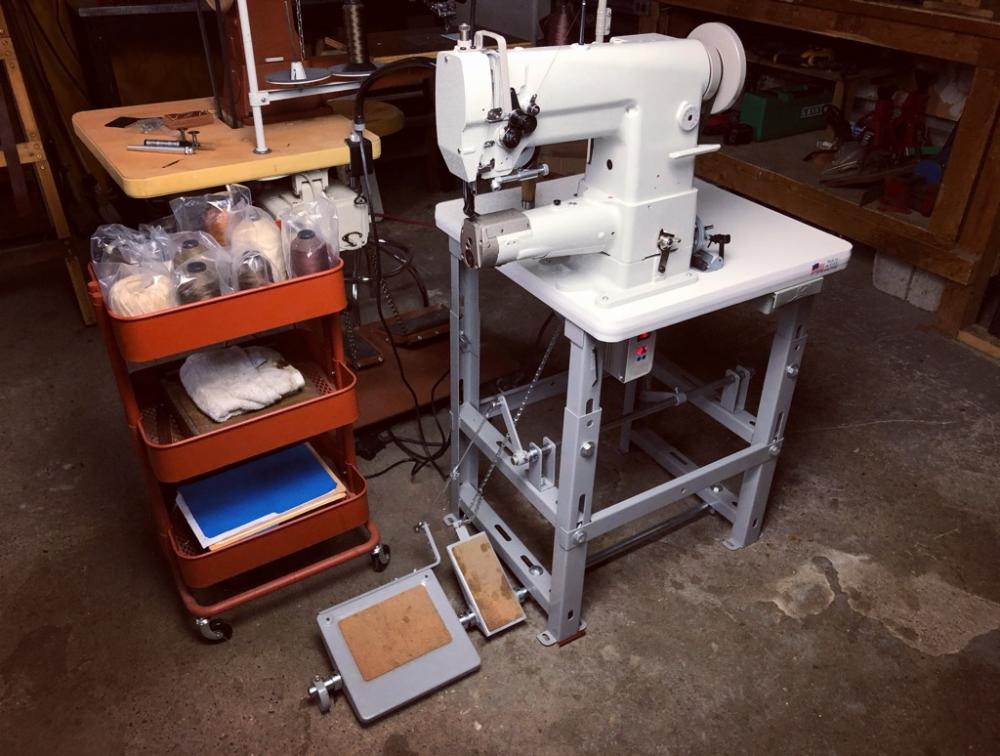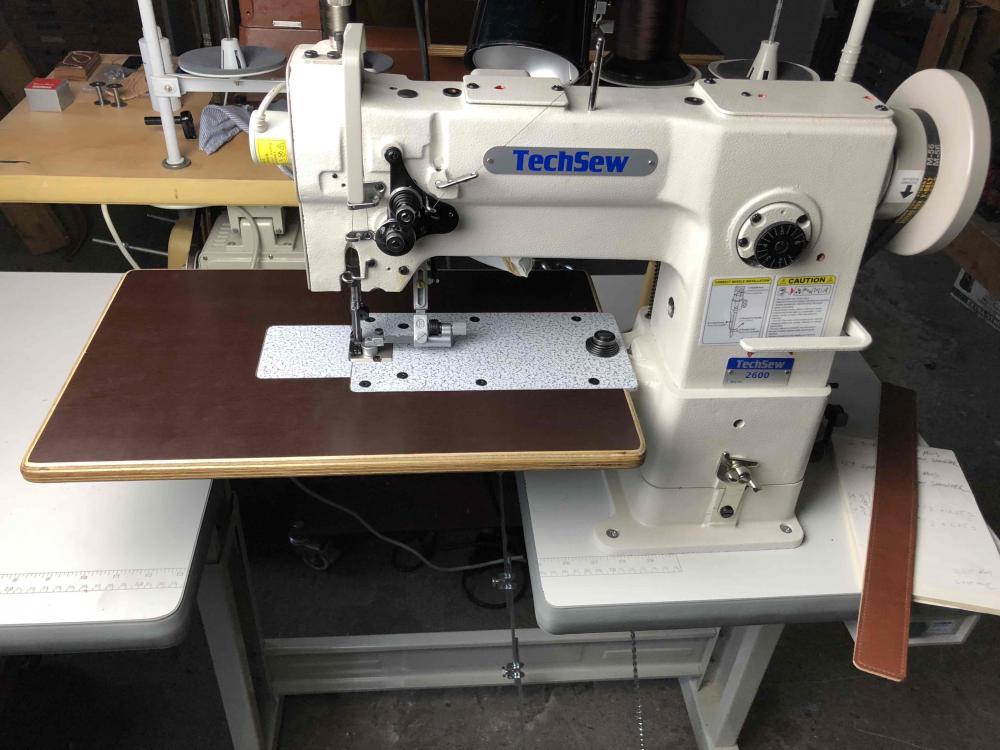-
Posts
57 -
Joined
-
Last visited
Profile Information
-
Gender
Male
-
Location
Ontario Canada
Recent Profile Visitors
The recent visitors block is disabled and is not being shown to other users.
HardenGoods's Achievements

Member (2/4)
-
Just saw this. Names Alden (after the boot company
-

First Tote bag
HardenGoods replied to AndyNext's topic in Purses, Wallets, Belts and Miscellaneous Pocket Items
This is nice! -
Thanks man!!
-

COBRA class 26 sewing machine.
HardenGoods replied to ComputerDoctor's topic in Leather Sewing Machines
So true and I learned this the hard way. I purchased a Cobra class 4 and it works beautifully (to say the least!! its amazing) on medium to thick material but when I took the time to dumb down my machine for lighter weight stuff, it never worked like I wanted it to. Someone on here had said something along the lines of "you are trying to use a sledgehammer to crack a nut". It was those words that got me looking for another machine to cover the thin(ish) to medium range of leather. Thats when I purchased a Juki 341 clone which is extremely similar to the Cobra Class 26. Although I had a few minor run-ins with my machine, I couldn't be happier with the two machine setup I have now. My two cents is to buy the machine that will cover the majority of the work you do first, and then a second to follow. This is very, very useful information if knife sheaths are going to be made most often! -
You got it - It totally is bright enough in person (photographer used a wide angle lens and some post effects). haha, my shop assistant seems to clean that kong out faster than I can fill it!
-

Juki 1341 experience? pros cons?
HardenGoods replied to plinkercases's topic in Leather Sewing Machines
Just an update on my Koby 1-341. It is in fact a nice machine. I saved hundreds of dollars buying it from Chris and setting it up myself (although it sewed pretty well out of the box). The table is very low quality. As I was loading it into my truck, I mentioned to Chris that the k-legs were heavily warped. He quickly grabbed me another one. Upon setup, lots of the holes in the table were missing and or too big or too small for the hardware provided. Because the table was of such low quality, I just purchased a new one made by a company named Phillocraft and I'm extremely happy. After setting up the machine, I noticed the felt pad was missing from the front of the machine head (and wasn't in the box), there was no machine stand peg for tilting the machine back and the Synchronizer adapter was warped and unusable. I called Chris up and he said I could come back to Toronto and grab the parts. I suggested he mail them because it was his mistake that they were left out... and he said no. He suggested that I have a friend pick them up and mail them to me if I didn't want to drive... strange but whatever. Lastly, although the machine has the push button and some other corresponding parts, this machine doesn't come with a safety clutch. Although it may not be necessary, the included instruction and parts manual both show the safety clutch assembly in existence (not to mention all of the other 341 clones that include it). I assumed it was an assembly line mishap during manufacturing and phoned Chris to see why my machine didn't have one and he said "you don't need. Customers don't like". I told him that I was under the impression that it was included because he had told me before I bought it that it was literally a Juki 341 machine with a different name (I knew it was a clone). Chris went on to tell me that he doesn't have those parts and cant get them in because they won't fit my machine and there was nothing he could do. The information just seemed a little shifty at this point. Just as a heads up to anyone purchasing from Japan Sewing: - The machine is sold at a very good price point (at least it was to me) and if your brain can process mechanics, you are set.. but only if all parts are there - Skip the table with zero hesitation - Be prepared to drive back for parts - There is no safety clutch on the machine and it, apparently, can not be obtained. If it could be, I'm sure I would be paying for it too... and I would have to pick it up. - Be aware that not all of the information you receive from this company will be accurate. -
Yea for sure. I experimented with various tension combinations between the upper tension disks/spring along with the bobbin case spring making sure that with each combination my knots were still in he middle of the material. I'm not exactly sure why this alleviated the jerk of the check spring to be honest but it did go away at the time of experimentation. I'm starting to wonder if the thickness of material in relation to the needle size could have something to do with it too - perhaps less needle hole space for the knot to be pulled in and inside of the material (requiring more upper tension) would cause a jerk before the knot finally gets pulled through the small needle hole and seats properly? (side note: bought this aftermarket table made by Phillocraft which Is super solid. Guess I like it a lot because I learned on a pedestal machine.)
-
Thats what I thought!! Something didn't seem right with mine. Some adjustments to the tension unit and all is well.
-
Me too!
- 23 replies
-
- skiving
- skiving knife
-
(and 1 more)
Tagged with:
-
Sounds like you are on the right path. After checking the above mentioned things, I always find it helpful to go through every single adjustment in the service manual separately and sew (without power, just by hand) right after each adjustment. A parts list layout may help you understand your machine better too because some of the parts are hard to see and reach (maybe someone provided this already, I haven’t read all of the previous posts).
-
Haha.. good sign.
-
It's a fantastic binding machine for sure - much versatility via attachments. It surprises me that the 1341 is out! The 341 definitely looks its age at this point lol. A dedicated flatbed machine is of course, even better. How do you like the 2810? That machine looks so damn beautiful.
-
I'm going to start by saying there is a very good chance you won't have the issues I did. I really don't want to lessen your excitement and expectations of the 2600 by any means. Ron and Mike were both very professional and helpful in regards to my situation. I had some small qualms with the roughness of the castings and paint job from the get go but it didn't bother me much because the machine was adjusted and timed to sew very well right off of the crate. My trouble came when I noticed my machine making strange grinding noises and would vibrate excessively. As soon as I noticed metal shavings/dust under the machine head (where the oil tray goes), I suspected deeper issues. Normally at this point I would dive in and make a thousand adjustments to get everything just right but the machine was brand new and I didn't feel satisfied for the price I paid... However, I did try changing out the belt, tried changing the motor (to two different servos I had) and double checked all settings via the engineers manual but couldn't narrow down why the machine made grinding noises. Basically, it sounded and felt very off. I'm hoping your experience is a great one. Also, if you love the machine, I have a flatbed attachment for sale that I picked up from Uwe, and customized it to fit the 2600 perfectly.
-
I will post an ultra slow hand turned stitch on my machine tomorrow. I'm starting to think this is how it should be too. The check spring jerks in Al Bane's Cobra 26 video (341 clone) as well.





